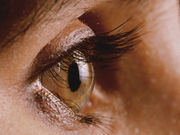Herpes simplex uveitis ID’d as cause of persistently elevated intraocular pressure after cataract sx
THURSDAY, March 31, 2016 (HealthDay News) — In a letter to the editor published online March 24 in Clinical & Experimental Ophthalmology, a case of reactivation of herpes simplex virus (HSV) uveitis is described in a patient with unexplained persistent elevated intraocular pressure (IOP) following intraocular surgery.
Rachel L.Z. Goh, M.B.B.S., from the Royal Victoria Eye and Ear Hospital in Melbourne, Australia, and colleagues describe the case of a 63-year-old man who presented in August 2015 with a 12-day history of high IOP in his right eye following uncomplicated phacoemulsification surgery. At presentation, the IOPs in the right and left eyes were 45 and 16 mm Hg, respectively. The IOP remained elevated despite extensive treatments.
The researchers performed an urgent fornix-based trabeculectomy, with subconjunctival application of Mitomycin C and intravitreal bevacizumab to treat the patient’s choroidal neovascularization. An intraoperative sample of aqueous humor was positive for an active HSV1 infection; the patient was treated with a course of oral acyclovir in addition to routine topical post-trabeculectomy medications. The patient’s IOP stabilized with routine post-trabeculectomy care over the subsequent three weeks. Acyclovir was reduced to a prophylactic dose.
“We suggest that reactivation of HSV uveitis should be considered in cases of unexplained persistent elevated IOP following uncomplicated intraocular surgery and any suspicion should be confirmed with aqueous sampling,” the authors write.
Full Text (subscription or payment may be required)
Copyright © 2016 HealthDay. All rights reserved.








